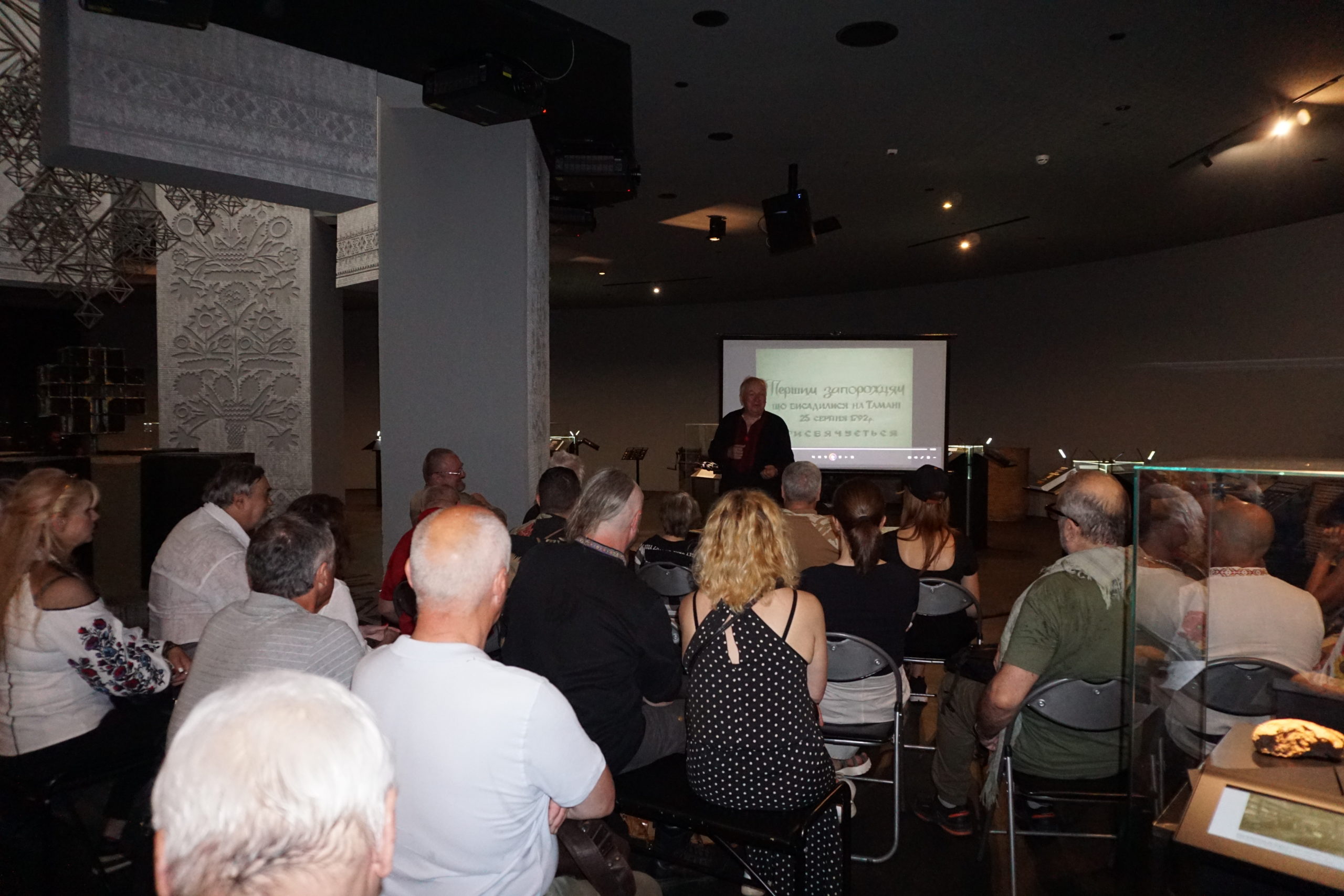The film “Kuban Cossacks. And it’s already two hundred years…”
“I was in the second grade, and the teacher asked the nationality. I said: “Cossack.” And he: “There is no such nation; you are Russian!”. I came home, crying. “Dad, why Russian am I; Am I not a Cossack?” I said to my father. “So we’ll be Russians, otherwise we’ll be evicted to Solovki… Let’s work and keep silent – that’s how it was at the time” – this is how one of the heroes of the film “Kuban Cossacks. And it’s already two hundred years…” which was shown at the Holodomor Museum on the 24th of June.
Filming this documentary about the history of the Kuban in the early 90s, director Valentin Sperkach did not expect his film would become history itself – a document of that time, a kind of portrait of the region and its inhabitants.
“Despite the fact that this is a film from 1992, I receive feedback by e-mail almost every day: people’s thoughts, words of thanks, and from Muscovites – just curses. I like it because the film does not leave anyone indifferent, – the director shared during the discussion of the film. – What do they write? That the film was commissioned by the US Congress or that the film was not filmed by real people but by actors. Both the first and the second are complete nonsense.”
The director notes that this film was a discovery for him personally. After all, he discovered for himself an island of the real Ukraine, which was destroyed and tried to slow down. But “even seventy years turned out to be not enough to erase the Cossack spirit from the Kuban” – this is exactly the conclusion of the authors of the film, and it is voiced in the film by the unsurpassed Bohdan Stupka.
“I remember people meeting us in the villages, and it was something exceptional in general. The tables were served for us, on which there were borschts, dumplings, lard and bottle stuffed with corn on the cob. Even in such small things, it was Ukraine from beginning to end,” says Valentyn Sperkach.
And while working in the archives, the film team managed to find out that the library of the Mgar monastery, which they could not find for a long time, is in the Kuban. It was taken away by the first Cossack settlers. They also took with them the archive of the Zaporizhzhia Cossacks.
“When we were in Krasnodar (and Krasnodar was not always called that, it used to be Katerynodar, and before that – Nova Sich), we searched for materials on the Holodomor in the archives of the local KGB. And suddenly we saw: there was a pile of such yellowed documents, it was clear that they were not new. I came up, looked, and our escort said: “That’s the Cossack archive…” and waved his hand carelessly. And we almost went crazy with happiness because we had the opportunity to touch those unique documents. And when we opened them, we saw exactly how 49 kurins were created, which were then ground in a mill. Even then, I said that it would be good for us to make their copies because of course they would not give us the originals.”
Valentyn Sperkach calls his film a drama. “This is a drama that happened to those people who were resettled to the Kuban. I think the fate of the Kuban will be decided over time. Recently, five Russian regions held online referendums in which people voted for separating from the Russian Federation. And Kuban is among them. It is no accident that our film was banned in the Kuban back in 1992 but we distributed it and it went through all the villages. I hope that I, to a certain extent, influenced the opinions of the people who live there,” says the director.
Head of the Holodomor and Mass Man-Made Famines Research Department of the Holodomor Museum, Professor Dmytro Bilyi, notes that there are still many pro-Ukrainian people in the Kuban:
“My parents are from Kuban, I have many relatives there. I keep in touch with people from there and I can say that this region remembers well who were its first inhabitants. Despite the terror that was in the Kuban in the 1930s and during the Holodomor, when a family could be shot for “Kobzar” and jailed for bandura… For instance, in the 1970s there were still signs in schools saying “Speaking in dialects is prohibited”. But since childhood, I remember the Ukrainian-speaking space that always surrounded me. Yes, in those territories, there is a certain group of anti-Ukrainian people who were resettled from Russia to the Holodomor-ravaged villages. But in most cases, the attitude towards Ukraine is very positive.”
The history of the Kuban region aroused great interest among those present, so they supported Dmytro Bilyi’s idea of holding a separate lecture on this topic at the Holodomor Museum.
